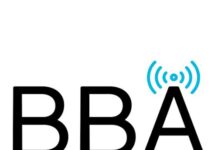
(By Georgia Beasley) Society tends to blame Millennials for just about everything going wrong nowadays. What I’ve found is that Millennials are creating the change needed in radio as a survival-of-the-fittest mechanism. It’s time we admit the obvious, there are certain habits and techniques that our industry has adopted that, quite frankly, need to be extinct. I believe Millennials are here just in time to shed light on areas that are no longer needed. First up, the 60-second commercial.
As broadcasters, it is our goal to deliver relevant and breaking news to our audience, right? Well that was what we were known for until a little thing called social media came along and flipped our traditional media world upside down. Now, not only must we bridge the gap between radio and delivering relevant content in real time, but we must also reevaluate the advertisements associated with this delivery.
While I do believe that both short- and long-form advertisements serve a purpose, I also think radio is best utilized with short-form ads instead of longer. The world of audio is extremely competitive and success is being seen with short-form advertisements. For a listener to sit through 30-45 seconds more of a commercial is unlikely when they can tune it to an outlet with :15s. Do we really need to hear the client’s phone number three times anymore? Short-form content is a great tool to capture and engage an audience and provide just enough length to get the point across. Millennials recognize this and will soon develop a strategy similar to Google’s seven-second adlets, where we build frequency with our #1 reach medium.
People are bombarded with so many long- and short-form commercials daily it is difficult to make your client’s advertisement stand out. Here’s how you can ensure that your commercial captures and engages your audience. Focus on your target audience. For example, if you’re trying to reach Millennials, think about sharing counterintuitive ideas. Get direct information out fast and easy. Also, humor resonates with this demographic. Memes appeal to Millennials because they are simple and straight forward. Our industry needs to focus on creating memes in audio and video form for advertisers.
Here are three rules to short-form advertising in radio:
Cross platform. Every campaign must be cross platform to provide the full effect of a short-form advertising campaign. We must integrate on all broadcast, digital, and social channels if we want to affect real change for a client and create a truly successful marketing campaign.
Simple. One of my first sales managers told me, “national makes you cry, local makes you buy.” Focus on one thing, and one thing only. Our jobs are to simplify the ads as much as possible and just get one focused point across. Each commercial, Facebook post, banner ad, etc. must be about one single idea in the campaign.
Visual. Obviously this could seem challenging in radio but think outside the box! Create graphics in your digital department or even source them out but make sure they are compelling and eye-catching. This is especially true on social media. You have a limited amount of words in short-form, so use these words wisely! Use them in your commercials and use the images to show your point whenever you can.
See ya later traditional-spot selling! Millennials are creating a very exciting world where the long-form advertisement and the saying, “that’s the way we’ve always done it” are going extinct.
Georgia Beasley is the director of TopicPulse strategic initiatives at Futuri Media and can be reached at [email protected]






Georgia’s article is not exclusively or necessarily about millennials or, for that matter, any other demographic or psychographic target.
It is about the quality of the content.
A fabulously produced, emotionally rich 90-second spot would not only be effective, it would become famous.
For every action, there is reaction.
Radio is already over-commercialized and cluttered beyond tolerance with shorter units of commercial content which includes station promos that exacerbate the problem.
Now this suggestion for shorter, 15-second commercials which will create stopsets of how many units: four, six, even eight plus a promo or two?
Content is radio’s critical issue – programming and sales – with commercial load and units remaining as the elephant in the room.
More of either is not the answer.
It’s the problem …
There are a couple of problems that have always existed, but the here and now are bringing to a head. Content is and has always been king. Prior to now, people may have had the patience to sit through bad content to get to the good. Now they don’t. So the true length of the content is not as important as the quality of the content; cue Roy Williams. If you can say it effectively with great content in :15, then do it. If you have outstanding creative that is 60 seconds, people will still listen. However it has to be 60 seconds of good content. Not 30 seconds of good content and 30 seconds of disclaimer. You will get only a few seconds of grace time in 60 seconds. The other problem that this brings to a head is when a client brings you bad content and pays you to run it. Do you now say no? 60 seconds of the biggest sale in the history of the company with millions of dollars of inventory, and I will pay you $10,000 this month to run it. The educational process needs to be wide spread from our industry through out the advertising community. The evolution has definitely begun. However, it should be based on content and not time. :15 seconds of bad content will cause just as much listener tune out.
Like this, because it’s not 1980 anymore.
I am on the back side of the baby boomers…your articles always help me relate and really understand millennials, especially the way they input information and process it. This is our future I may be old but I’m open-minded and truly enjoy learning for millennials. Thanks for your contributions!